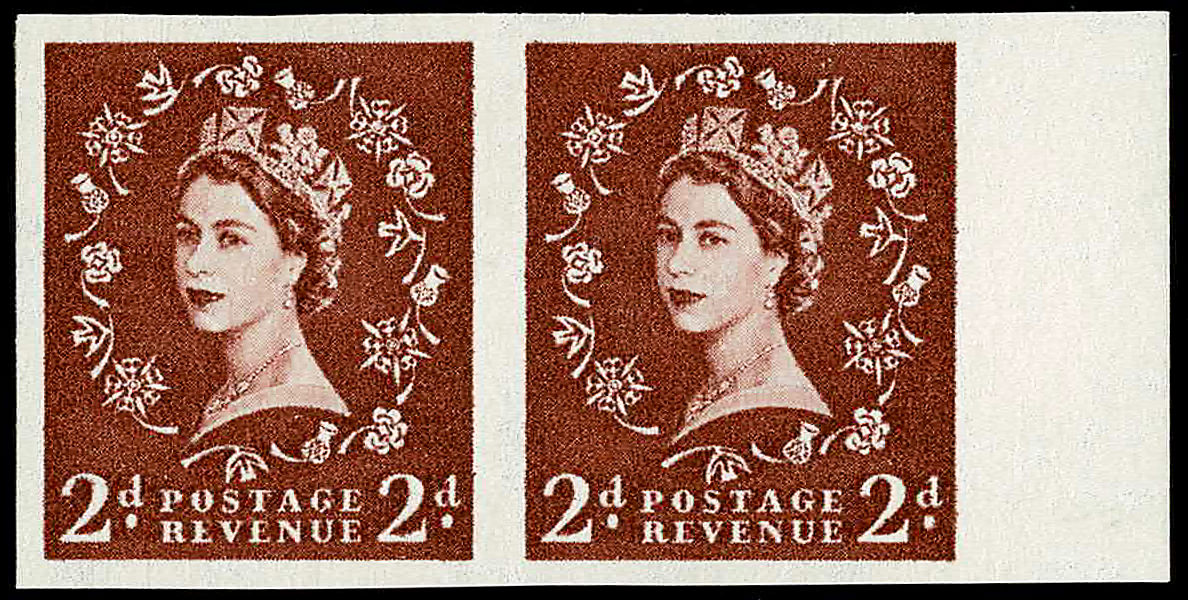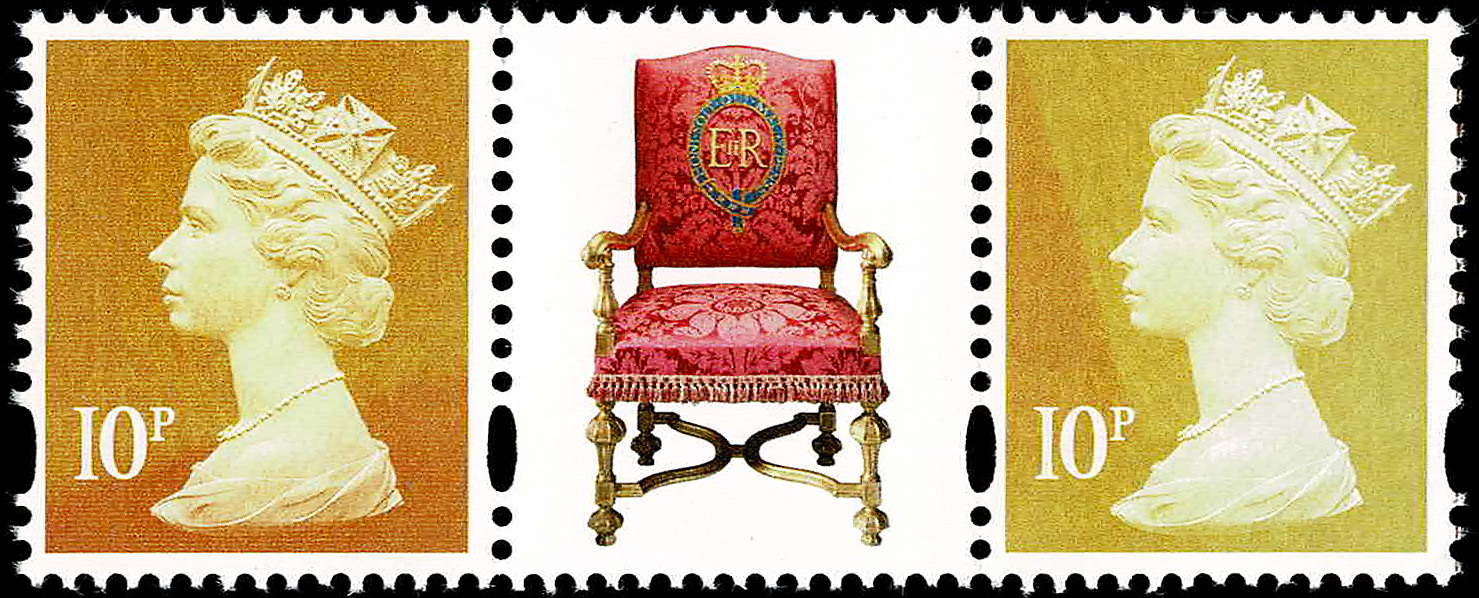Stamp Errors, Freaks and Oddities - What Are They?
There is such a huge variety of Errors, Freaks and Oddities (EFOs), it can be a little confusing where to start. If you are new to EFOs, this is the guide for you to get to grips with a fascinating new category for your collection.
It is likely that you have seen a copy of a Stanley Gibbons catalogue, and you may have noticed that there are additional variants underneath many product listings. For example, "a. Imperf Pair" or "y. Phosphor omitted".
Read on for a comprehensive guide on these EFOs, and when you are ready you can click here to go to the EFO products we currently have for sale.
Phosphor Errors
Phosphor coatings have been applied to GB stamps since 1959, and ever since there have been weird and wonderful variants created.
"Phosphor Omitted" - these stamps have the phosphor partially or completely missing.
"Phosphor on Gummed Side" - where the phosphor coating has been applied on the reverse of the stamp.

Phosphor Bands on Gummed Side & Partially Omitted.
"Phosphor Shift" - where the Phosphor bands have been applied in the incorrect location; for example, a Centre Band is applied as a Left Band.
Perforation Errors
Perforations have been on stamps since the 19th century, allowing for sheets of 100 or more stamps to be easily separated without scissors. Perforation errors are more common on earlier issues, where sheets were hand fed in to machines.
"Perforation Shift or Misperf" - where the perforations have been applied, but in the wrong place. The perforations may be only slightly shifted, causing the stamp design to be closer to one edge than it should be. A more severe Perf Shift creates part of the stamp design to be split across the Perforations, with the most extreme Perf Shifts being applied at diagonals.

Perforations Shifted Downwards.
"Imperforate" - where the perforations have not been applied to the sheet. Stanley Gibbons typically lists "Imperf Pair", meaning two stamps without any perfs between them.

Imperforate Pair from Sheet.
"Tete-beche" - a pair, strip or block of stamps is created where one or more of the stamps are printed at 180 degree rotation to the others. This occurs when a die on the printing plate is inserted upside down, and is often called "head to tail".
"Blind Perf" - where a perforation has not been cleanly punched-through, leaving some or all of the paper to remain in the perforation "hole".
"Miscut" - when the guillotine or blade used to cut the sheet is misaligned, causing the perforations on one or more edge, and sometimes some of the design, to be cut off unintentionally. This causes a stamp that looks imperforate when it should not be.
Design Errors
A design error is where the stamp doesn't have any mechanical printing error, but the design itself is incorrect. Examples of this can include:
- Spelling errors
- Applying the wrong inscription for the design
- Using the wrong portrait or image
- The wrong face value is applied
Offset Errors
An offset error occurs due to a fault in the printing process. Normally, the printing press should feed a sheet of paper and then apply the die coated with ink. When an offset error occurs, the press fails to feed a sheet of paper. This means the ink is applied to the bed where the paper rests, so when the next sheet of paper is fed, an offset of the design is applied to the gummed side of the sheet. This creates a faint mirrored image of the design on the reverse of the stamp.
Omission and Double Application Errors
One or more features of the design may be omitted, frequently the face value or the Queen's head, and often the omission of one of the colours. The opposite may also occur, where one feature is applied twice, which may cause part of the design to simply appear darker, or for it to appear twice slightly apart.

Brown tubing omitted (SG667pa).
On more modern issues, such as U-Security Machins, omissions occur with Iridescent Overprints, the security feature to prevent fraud.
Paper Errors
Stamps can be printed on the incorrect paper for a variety of reasons. Older issues may have been printed on the incorrect paper altogether due to a shortage of supply, with a conscious choice being made to continue printing with an alternative paper. Stamps may also have been printed on the wrong paper due to human error, with the wrong paper type fed by mistake in to the printer. There are also errors where the stamp is printed on the correct paper, but on the wrong side - this causes the gum and design to be on the same side of the stamp (on older designs, the gum was manually applied after printing).
Paper errors also include Watermark errors. A Watermark may be completely omitted, or applied at the wrong orientation. A Watermark may be inverted, sideways, or reversed.
Colour & Shift Errors
Colours may be omitted, causing only a partial design to printed. This can be subtle, such as missing shading, or more obvious with large parts of the design missing completely. Inversely, a colour may be applied twice, causing a darker appearance.

U3074 Colour Partially Omitted.
The wrong colour may also be applied, causing the correct design to be printed, but with a different colour palette.
Colour Shift errors occur when the design is printed using multiple cylinders, and the paper feeds through these cylinders one-by-one. If one of these cylinders is mis-aligned, or the paper is fed off-centre, the cylinder applies the ink in the wrong place. This often creates a ghost of the design in the shifted colour.

Grey Victoria's Head Shifted Down.
There also exists "albino" printing errors. This is where the die is stamped on the paper, but the ink is missing from the die. This causes the outline of the die to be impressed on the paper, but no ink is applied.
Gum Errors
Older stamps had gum applied manually after the design was printed, causing opportunity for human error. Stamps may have gum missing, the wrong type of gum applied, the gum on the design side, or the gum on both sides.
On more modern stamps, the gum is pre-applied to the paper before printing. This makes gum errors rarer on modern stamps.
Blade, Retouch and Smear Errors
Whilst each of these have a different cause, they all give a similar (but identifiably different) effect of a line or smear in the design.
"Doctor Blade Error" - in Gravure printing, there is a blade that removes ink from the cylinder head. When this blade is worn or faulty, it causes excess ink to be printed, usually in a straight line, giving the effect of a hair lying across the paper.
"Retouch Error" - where damage or a fault is noticed on the stamp, the stamp may be directly altered by hand, or more commonly the die is repaired by hand to prevent the error occurring again. This hand repair causes a less serious, but still visible, imperfection in the design.
"Smear Error" - where a faulty printing press, or a human error, causes the still-wet ink to be dragged across the paper. This creates a smear through part of the design, with less serious errors appearing as simple smudges, and more serious errors causing a complete obliteration of the design.

